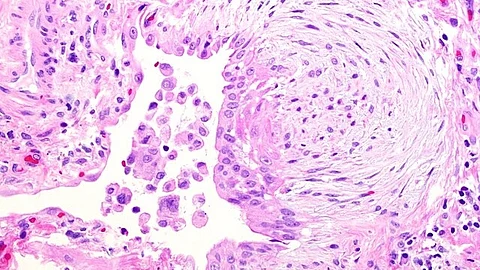In a new study on mice, researchers at Karolinska Institutet and Uppsala University in Sweden show that connective tissue cells called fibroblasts have a previously unknown and very important function in mediating erection.
“Fibroblasts are the most abundant cells in the penis of both mice and humans, but they have been neglected in research,” says Eduardo Guimaraes, researcher at the Department of Cell and Molecular Biology at Karolinska Institutet and first author of the paper. “Now we can show, using a very precise method called optogenetics, that they have a very important role in regulating blood flow in the penis, which is what makes the penis erect.”
The study shows that fibroblasts mediate erection by taking up the neurotransmitter noradrenaline, which leads to the widening of blood vessels in the penis. How effective this process is depends on the number of fibroblasts.


